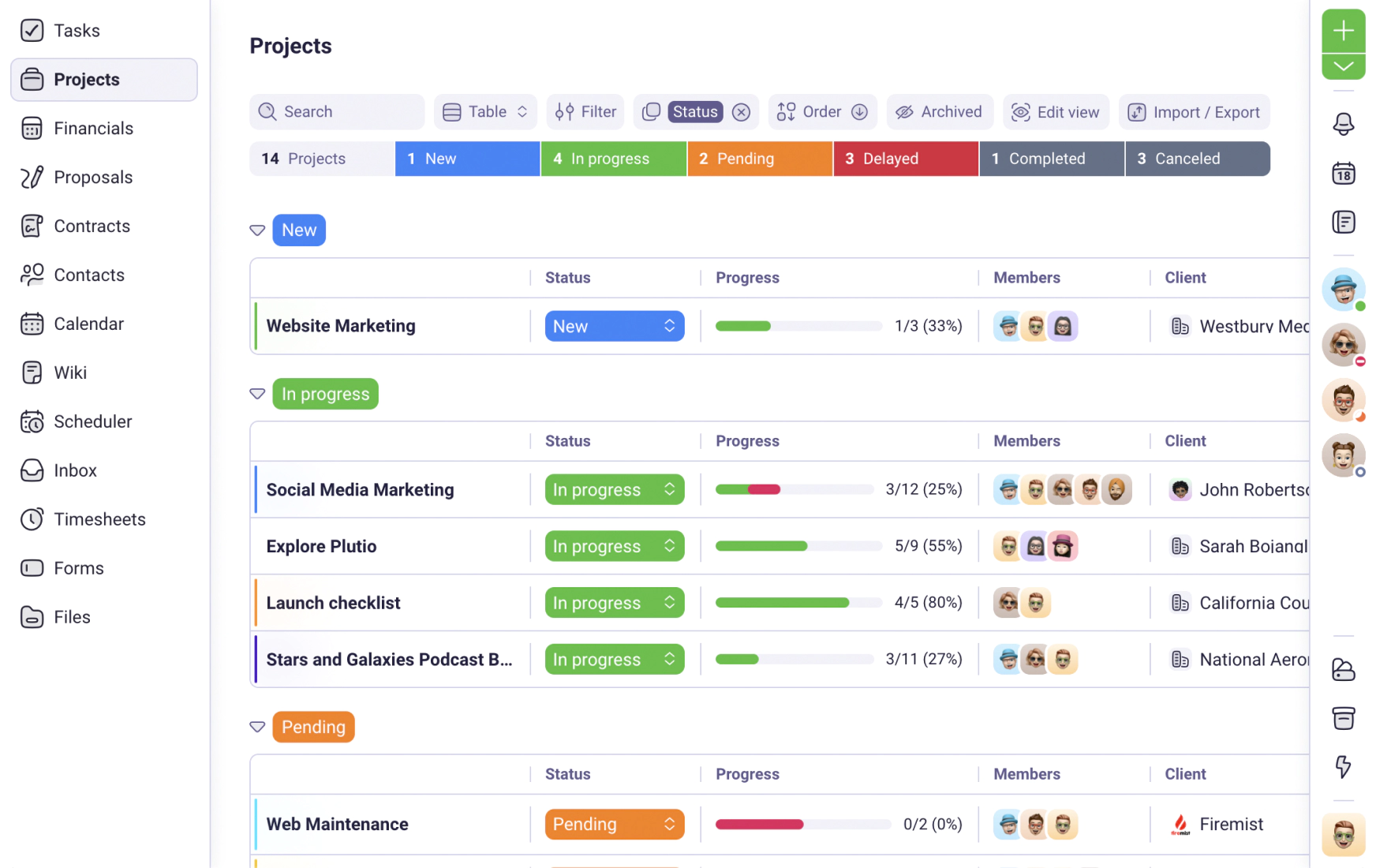We use cookies to personalise and enhance your experience.
The freedom of freelancing can be intoxicating. It’s your work, on your schedule, as you see fit. Well, almost. Client work and deadlines have a role to play as well. You’re tempering the requests of others to work within your schedule and your goals while simultaneously managing enough marketing and scheduling to make sure the bills get paid.
Even then, sometimes, it’s not enough. For every bit of freedom that freelancing offers, there’s a little moment of panic that goes with it. You need to make sure you’re paid a functional amount on a frequent enough basis to make ends meet. You’re managing the expectations and emotions of others while your ability to pay bills rests in their willingness to pay in a timely manner. And let’s not forget the expectation that you will receive enough commissions to make ends meet.
Occasionally, the jobs come pouring in. Happy customers tell their friends, a couple people stumble across your portfolio. In between, you might hit dry spells where work isn’t plentiful and you’re drawing on your savings to get by. In conjunction, these situations present the opportunity and need to scale your freelancing business. By capitalizing on times of plentiful work, you can minimize dry spells and their impact on your life.
In this article, we'll focus on three different aspects of your business where you can increase revenue, as well as a few helpful tactics for starting to scale. Whether you’re interested in creating more stability in your income or working towards freelancing full time, scaling your workload will move you forward.
Increasing Volume
When people think of scaling their freelancing, they often think it means having to take on more projects. This is absolutely an option, though it isn’t always the most suited one. Taking on more projects requires more time and energy, making it one of the more difficult ways to increase your business.
If you choose to take on more projects, you need to be certain of several things. One, you need to know that you have the bandwidth. In order to be successful, you must be able to reliably estimate the time and money that will go into producing each work so that you can tightly schedule projects. If you over-extend yourself and take on too much, you won’t be able to deliver on deadlines and you’ll end up doing more harm than good, even if there is an initial influx of income.
Second, you must be organized and have an efficient workflow. If you previously kept track of projects in your head or in a simple list-type system, that likely won’t work anymore. Juggling more projects means more deadlines, more guidelines, and more contacts. You’ll need to develop a system for tracking your time accurately for each project, as well as further your ability to estimate job requirements. Consider a task-management software, a custom Excel sheet, or an old-fashioned pen-and-paper planner. As long as the system works for you and keeps you timely, it doesn’t matter what it is.
Finally, you need to understand your personal bandwidth. Scaling work is more than just filling your hours — it can take an emotional and mental toll that isn’t always anticipated. You’ll need to be more cognizant of burnout and fatigue as your schedule becomes more saturated. Make sure to schedule time to track your progress, further your education, or just decompress.
Increasing Complexity
If you don’t have the bandwidth to take on more projects, consider increasing the complexity of the projects you’re taking on. If you’ve previously stuck to simple, run-of-the-mill projects, maybe it’s time to further your education, leverage your experience, and take on work that you find challenging.
Before you decide to jump into the deep end and start working on the hard stuff, there are a few things to consider. You must understand the skills you possess. While it’s good to challenge yourself and try new projects, you’ll be most successful if you determine where your strengths lie and catapult off of those. You wouldn’t suddenly start writing in highly-technical medical publications with no experience in the health sector, but you might be ready to push the caliber of technology publications in your court.
Be mentally prepared for it to be hard. Any time you’re pushing the boundaries of what’s comfortable, there’s a learning curve. You’ll need to be prepared to be stressed and frustrated through the first few projects as you’re figuring things out. You may require more edits, extra research, or any number of adaptations to up your game. Continuing education can be especially helpful, and there are a lot of free resources available online.
While you’re learning and adapting, you’re going to be slower. Budget for this as you prepare to take on more complex projects, and know that you’re playing the long game. As you become efficient in difficult work, the time and energy you invested will pay dividends. You’ll also be able to charge more than you would for basic projects — be sure that your pay scale reflects this as you expand.
Increasing Scope
FInally, you may consider increasing the scope of projects you take on. Slightly different from increasing complexity, widening your scope involves taking on projects that are adjacent to your primary means of income. It may require teaching yourself a new skill or taking a class, but having multiple types of projects available to you not only opens up entirely new markets, but it alleviates monotony that may come with repetitive work.
As with upping your complexity, increasing the type of projects you do will take some time. The first projects you complete will likely be slow and have some hiccups, but you’re making yourself more marketable in the long run. As you add more projects to your portfolio, you’re expanding your potential client base and making yourself more viable as a small business, if that’s your goal.
If you’re considering going this route, it may be helpful to seek out a mentor who already works in the field. This is someone you can send questions to about pricing and the nuances of customer relations, understanding the target demographic for the product, or using as a supplement to traditional or online education.
Helpful Hints
No matter what route you choose to take when growing your business, there’s going to be some growing pains involved. You’ll be investing more time and energy into your work to up your game, and hopefully seeing the return on investment as your client payments come in. To maximize success, here are a few things to keep in mind:
- There may be an initial income dip. Budget for this, and try not to be afraid of it. You’re investing in your business for the long term.
- Know your worth. Any good freelancer knows that setting rates is half the battle. No matter what aspect of your business you’re expanding, your pricing needs to reflect that. More jobs means you’re using more resources. Greater complexity means a higher level of skill — this is a higher value. And a new scope of work means learning the pricing structure for a whole new set of projects.
- You’ll need a marketing push. If you’re looking for more business, get yourself in front of new potential clients. Look at job sites, message boards, local meetups — use every trick in the book to establish more relationships that can generate more leads. New services and higher end services certainly deserve an email blast to existing clientele, as well as a marketing push to a demographic you’re newly qualified to serve.
- Be confident. Even if you're entering a new sector or have some internal doubts, don’t let it show. Fake it til you make it, and remember that the internet is chock full of amazing resources for education.
- Prioritize the customer experience. This is obviously important no matter what stage your business is in, but it’s especially important during times of growth.
- Don’t be afraid to say no. Scaling is hard work, and you don’t want to overextend yourself. Poor customer service, rushed work, and poor communication can all turn off clients. What could have been an ongoing relationship might turn out to be a one-time gig if your people skills and production quality don’t stay up to snuff.
You’ve made it this far successfully, and if you’re looking to scale, that means you have the capacity and the self-confidence to take on more work. Keep this at the front of your mind as you move forward, and set yourself up for success with organizational tools, marketing tactics, and compassion for yourself as you discover speedbumps.
Have you tried Plutio yet?
The only app you need to run your business and get work done.
Try Plutio for FREESupercharge your business
The complete toolkit to run your business
The intuitive all-in-one solution to manage and collaborate on projects, share files, build forms, create proposals, get paid, and automate your workflow.
No credit card required


